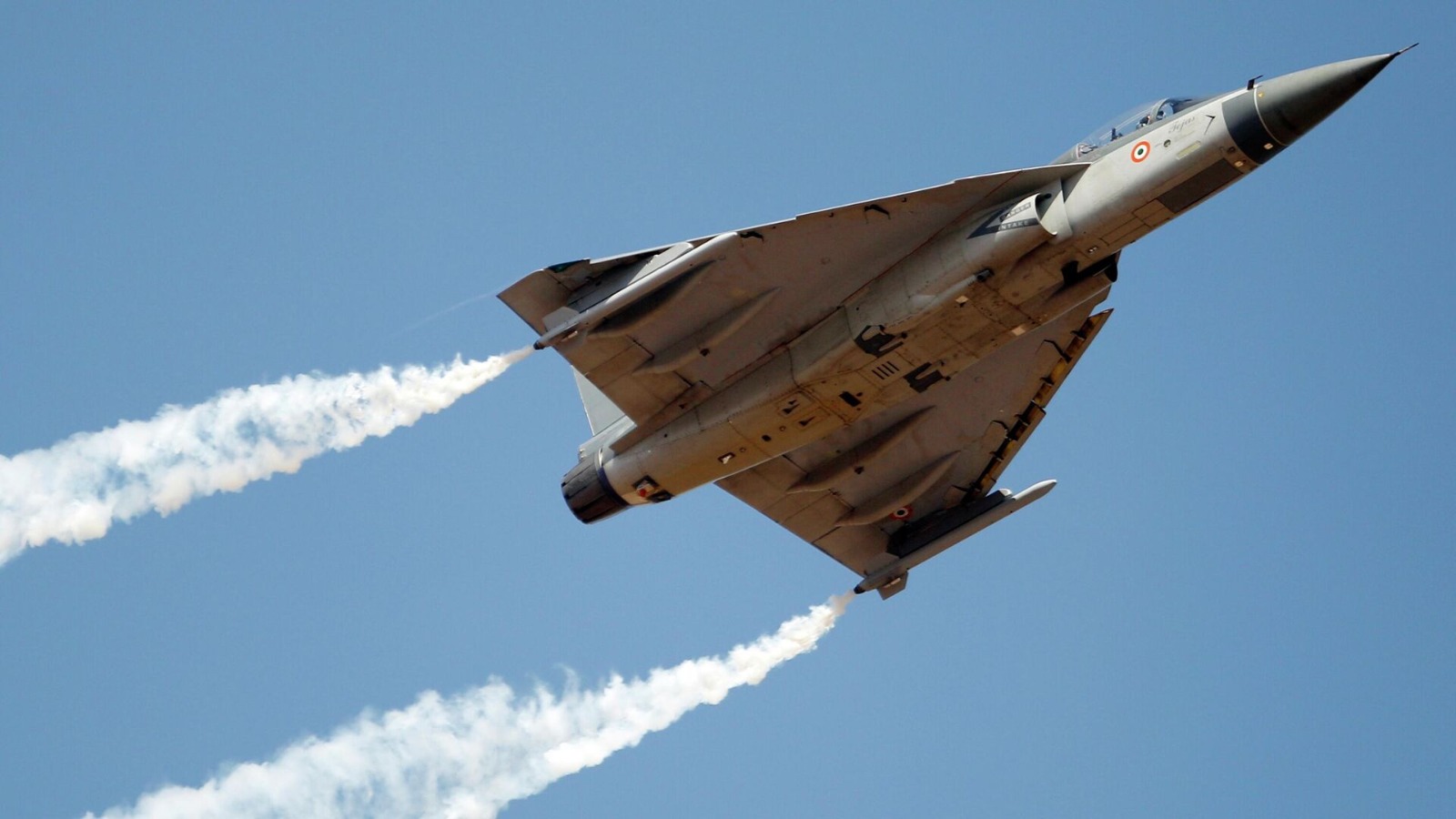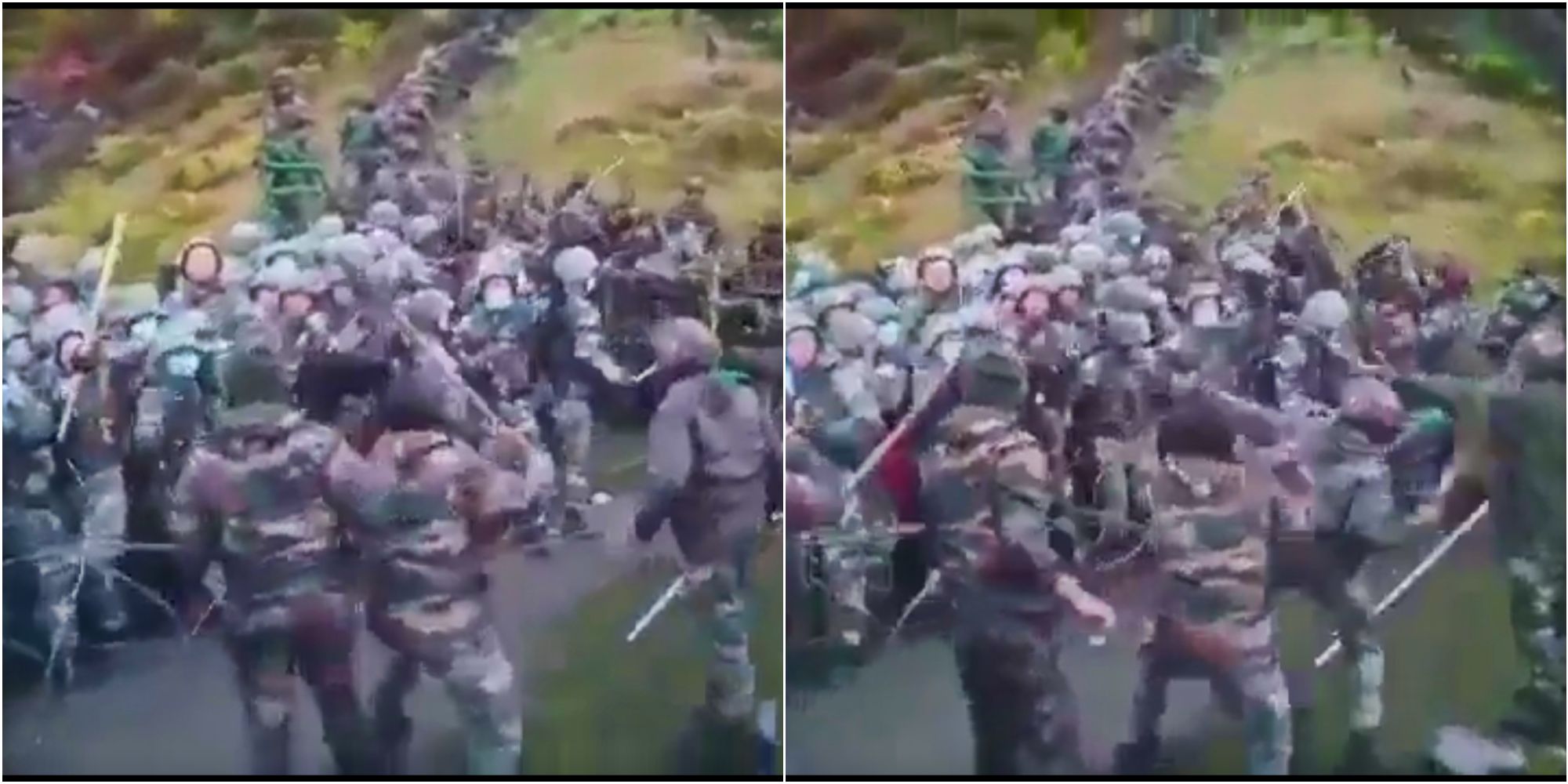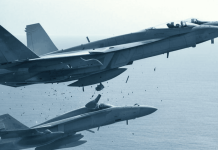Pakistan Air Force (PAF) recently released a video giving a glimpse of the Chinese FC-310 ‘Gyrfalcon’ (formerly known as the J-31), a fifth-generation fighter jet highlighting its modernization drive. The Indian Air Force (IAF) will respond next week when it commences a massive war drill, Gaganshakti, along the western and the eastern border.
Pakistan Air Force (PAF) recently released a video giving a glimpse of the Chinese FC-310 ‘Gyrfalcon’ (J-31), a fifth-generation fighter jet highlighting its modernization drive. @IAF_MCC will respond next week when it commences a massive war drill along the western and eastern… pic.twitter.com/3QWaoR019Z
— EurAsian Times (@THEEURASIATIMES) March 25, 2024
The 10-day wargames will test the IAF’s ability to take on Pakistan and China simultaneously. Gaganshakti-2024 is expected to be bigger than the last all-air force exercise, which took place in 2018. Gaganshakti 2018 saw over 1150 aircraft generate a blistering rate of 11,000 sorties in 13 days.
From April 1, 2024, onwards, almost the entire air fleet will be activated from north to south and from west to east to test integrated war-fighting strategies and tactics in conjunction with the Indian Army and the Indian Navy.
In 2018, the IAF covered all terrain operations during the Gaganshakti – desert, high altitude, maritime, and special operations. The specific focus was on aerial combat, air-to-surface combat, paratrooper assault, and medical evacuation.
The first Phase had begun on the western border with Pakistan, where Sukhoi Su-30 MKI and maritime Jaguar fighter aircraft engaged in targeting over the western seaboard. During Phase II, the focus shifted to the eastern corridor near the China border in the northeastern states.
The IAF had carried out strikes against maritime targets in conjunction with the Indian Navy. Maritime assets operated from bases in the southern peninsula and the Andaman and Nicobar Islands. A glimpse of this synergy was reflected in the anti-piracy operation conducted by the Indian Navy and the IAF recently.
The IAF had tested the efficacy of indigenous LCA aircraft and the Akash Missile system was validated. The upgraded Mirage-2000 and MiG-29 aircraft were tested in an operational environment.
The 2024 Gaganshakti comes after Operation Balakot, during which the IAF struck targets across the border with Pakistan and the ensuing Operation Swift Retort by the PAF. Since then, the IAF has inducted the French fighter jet Rafales, the indigenous Light Combat Helicopter (LCH) Prachand, and the C-295 transport aircraft.
The IAF has integrated BrahMos supersonic cruise missiles with Sukhoi fighter jets. The French Rafale has also come with the Meteor beyond-visual-range air-to-air missile (BVRAAM) developed and manufactured by the MBDA.
The IAF inducted the Russian S-400 surface-to-air missiles along with the indigenous Astra Beyond Visual Range (BVR) Air to air-to-air missile in its inventory. These long-range missiles have boosted the IAF’s firepower majorly.
The LCA ‘Tejas’ was inducted into the IAF in 2016, but it has been recently that it is sending its two LCA squadrons on detachment to forward air bases along the western and northern frontiers. The year 2023 saw LCA being deployed in Jammu and Kashmir.
The biggest handicap the Tejas has so far has been that it is not combat-proven and has never faced a challenge, as its Indian peninsular deployment meant it is a peace-time combat jet.
But all that could change if Tejas is permanently deployed in one of India’s forward air bases facing west or north, and it would need to patrol the skies over India’s two volatile borders.
Gaganshakti-2024 will be putting these newly acquired capabilities to the test. A NOTAM issued by the IAF between April 1-10, 2024, gives a hint of the extent of the wargames. NOTAM is a notice filed with an aviation authority to alert aircraft pilots of potential hazards along a flight route or at a location that could affect the flight.

Gaganshakti-2024 comes with strained relations with China in the backdrop. The violent clashes of Galwan Valley led to a massive build-up of forces along the Line of Actual Control with China. The IAF also played a key role in the swift response.
Light combat chopper (LCH) was deployed in Eastern Ladakh even before induction to counterbalance an aggressive China. Rafales have been conducting long-duration flights in the Indian Ocean Region to demonstrate the IAF’s reach.
The impending war drills are expected to focus on network-centric operations where unmanned aerial vehicles will also be put to work. The Indian Army’s newly acquired swarm drones are likely to participate in the wargames, considering the IAF will be inducting its swarm drones soon.
From Brasstacks To Gaganshakti
In 1987, a thousand armored vehicles were strewn across India’s western desert as the Indian Army launched the final stage of one of the largest and the most controversial peacetime military exercises in South Asia since World War II.
Conducted just 120 miles from the Pakistani border, the scale of the war games, with 150,000 troops mobilized, was larger than the exercise conducted by the NATO allies in Europe. The Brasstacks had the entire world on edge, with countries fearing that the two countries would start an accidental war in the Indian subcontinent.
The exercise marked India’s entry into the realm of advanced electronic tank warfare, demonstrating the use of computers and mechanized units possessed by only a few armies in the world at that time. By January 1987 there were 3,40,000 troops standing eyeball-to-eyeball on the 250-mile-long India-Pakistan border traversing through deserts and northern Himalayas.

Since Brasstacks, India has come a long way. In the past few years, it has maneuvered away from defensive posturing and has become more assertive regarding military capability augmentation. Gaganshakti reflects this.
The Gaganshakti 2024 was preceded by Vayu Shakti- a mega firepower demonstration carried out by the IAF in the Thar desert.
The Gaganshakti will be followed in August by the IAF’s first multinational exercise, Tarang Shakti. The US, Germany, France, Australia, and neighboring and other friendly countries are expected to participate in it.
The IAF has been participating in multilateral aerial exercises with increasing frequency. In 2022, the IAF took part in Exercise Pitch Black-22, conducted by the Royal Australian Air Force at its Darwin Air Base. Air forces from 17 countries participated in it, and the IAF joined it with four Su-30 MKI and two C-17s.
In 2023, the IAF’s Rafale, two C-17s, and two Il-78s participated in Exercise Orion in France. Air Forces from Germany, Greece, Italy, the Netherlands, the UK, Spain, and the US also participated.
The IAF also participated for the first time in Exercise Bright Star-23, held at Cairo Airbase last year. The US, Saudi Arabia, Greece, and Qatar also participated in the exercises.
- Ritu Sharma has been a journalist for over a decade, writing on defense, foreign affairs, and nuclear technology.
- The author can be reached at ritu.sharma (at) mail.com
- Follow EurAsian Times on Google News




